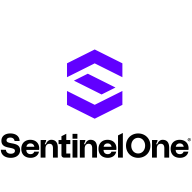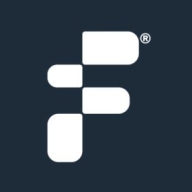

![Threat Stack Cloud Security Platform [EOL] Logo](https://images.peerspot.com/image/upload/c_scale,dpr_3.0,f_auto,q_100,w_64/o0no0it6ybl6satjcxomcblsgmd6.png?_a=BACAGSDL)
Threat Stack Cloud Security Platform [EOL] and Fidelis Halo are competing cloud security platforms with Fidelis Halo having the upper hand due to its advanced functionalities and comprehensive support services.
Features: Threat Stack Cloud Security Platform [EOL] provides robust monitoring, intrusion detection, and flexible configuration. Fidelis Halo caters to advanced threat detection, comprehensive endpoint security, and real-time response capabilities.
Ease of Deployment and Customer Service: Threat Stack Cloud Security Platform [EOL] integrates efficiently within cloud environments and provides commendable support. Fidelis Halo ensures seamless integration into existing systems with a structured deployment process, coupled with strong customer support services.
Pricing and ROI: Threat Stack Cloud Security Platform [EOL] offers competitive pricing and a good ROI, though its end-of-life status might affect long-term value. Fidelis Halo, despite possibly higher initial costs, provides superior ROI due to its extensive feature set and continuous support services.
| Company Size | Count |
|---|---|
| Small Business | 47 |
| Midsize Enterprise | 20 |
| Large Enterprise | 53 |
| Company Size | Count |
|---|---|
| Small Business | 2 |
| Midsize Enterprise | 5 |
| Large Enterprise | 2 |
SentinelOne Singularity Cloud Security offers a streamlined approach to cloud security with intuitive operation and strong integration capabilities for heightened threat detection and remediation efficiency.
Singularity Cloud Security stands out for its real-time detection and response, effectively minimizing detection and remediation timelines. Its automated remediation integrates smoothly with third-party tools enhancing operational efficiency. The comprehensive console ensures visibility and support for forensic investigations. Seamless platform integration and robust support for innovation are notable advantages. Areas for development include improved search functionality, affordability, better firewall capabilities for remote users, stable agents, comprehensive reporting, and efficient third-party integrations. Clarity in the interface, responsive support, and real-time alerting need enhancement, with a call for more automation and customization. Better scalability and cost-effective integration without compromising capabilities are desired.
What are SentinelOne Singularity Cloud Security's standout features?SentinelOne Singularity Cloud Security is deployed in industries needing robust cloud security posture management, endpoint protection, and threat hunting. Utilized frequently across AWS and Azure, it assists in monitoring, threat detection, and maintaining compliance in diverse environments while providing real-time alerts and recommendations for proactive threat management.
Fidelis Halo is a robust cybersecurity solution that excels in its primary purpose and application.
Users value its strong security capabilities, efficient threat detection and prevention measures, comprehensive network visibility, and user-friendly interface.
With Fidelis Halo, organizations can effectively monitor and protect their networks, proactively detect potential threats, and quickly respond to security incidents.
Threat Stack Cloud Security Platform [EOL] offers robust security features including endpoint monitoring, rule customization, and integration capabilities, with easy connectivity to cloud services like Docker and AWS.
Threat Stack Cloud Security Platform [EOL] provides tools for enhancing security visibility across cloud infrastructure. It supports AWS and Docker integration, facilitating efficient threat detection and management. Users appreciate its capability to configure customizable alerts and monitor endpoints, sessions, API interactions, and cloud services. However, there are areas needing improvement, such as better serverless environment support and reduced alert frequency. The platform services smaller organizations by compensating for limited security resources with its comprehensive monitoring and auditing tools.
What are the key features?In specific industries, Threat Stack Cloud Security Platform [EOL] is utilized for its strength in monitoring cloud infrastructure and preventing unauthorized access. Organizations in fields where cloud operations are critical use it for regular audits and monitoring. Its capabilities in threat management are leveraged to maintain secure operations and compliance, especially where there is no dedicated security team.
We monitor all Cloud Workload Protection Platforms (CWPP) reviews to prevent fraudulent reviews and keep review quality high. We do not post reviews by company employees or direct competitors. We validate each review for authenticity via cross-reference with LinkedIn, and personal follow-up with the reviewer when necessary.